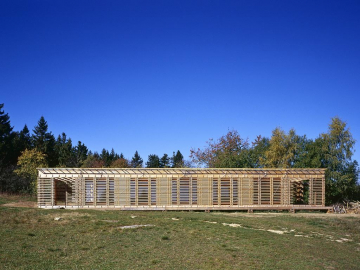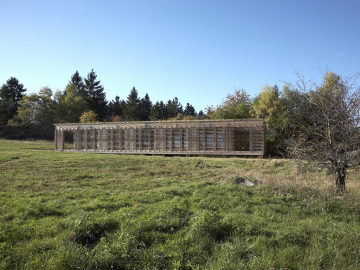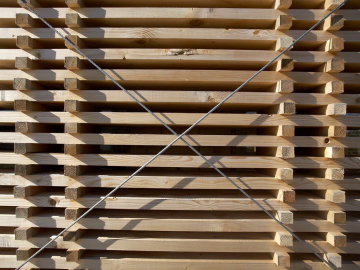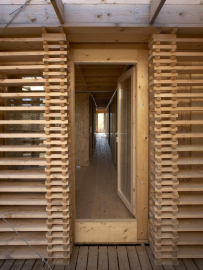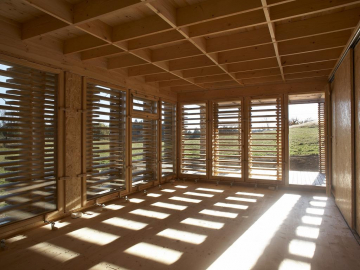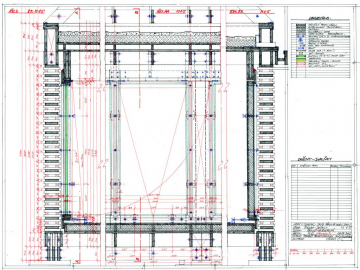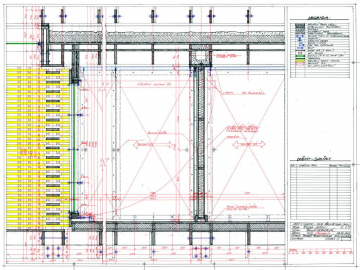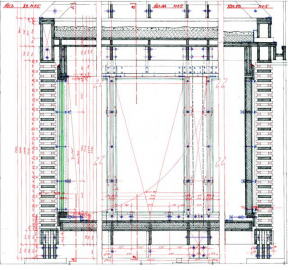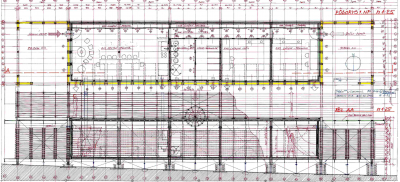Stack of Wood
The client purchased land in a protected nature reserve known as Czech Canada: wide meadows and rock outcroppings surrounded with pines. His wish was to build a stack here. What emerged is a house of nine modules of 3.60 m: the two modules at the edges are left open as terraces. The entire northern side is insulated and simultaneously forms, as in Japan, a long cabinet with sliding doors. The southern, eastern and western sides of the house are glazed from inside. The sliding dilation joint allows for fixed swinging frames with double glazing to be fitted even into the structure of the lumber stack, which can change its dimensions with damp or gradual drying of the wood. Experimentation with the hollow lumber stack here reached the level of a fully inhabitable house, where the tectonics of the hollow lumber stack simultaneously serve as a pleasant, firm external shading that prevents the emergence of a greenhouse effect inside.
The basic construction principle is the ,,dry" assembled undried, unplaned, and uncut wood. The wood arrangement creates internal spaces inside the construction, which can be used. The internal spaces are closed by the lower and upper grate. The joints are secured only by the construction weight; then, they are freely sliding. The whole structure may be deformed I in a scope and way, which are quite unthinkable in other objects. The system allows to reach, to change, or to adapt any part. From the interior I side, the internal areas are covered by a free building set of glassed frames suspended from the upper horizontal structure.
On the northern side, these frames are filled with fibre boards, with double-glass boards on the other sides. The internal partition walls are either fixed, or sliding, made also of fibre boards suspended from the upper horizontal structure. One of the main endeavours was to grasp the object very sensibly with regard to the environment and natural neighbourhood. The construction has no foundations; it doesn t penetrate the landscape, it only touches it. To summarize, it is about the minimum work, minimum adaptations, I minimum time, minimum energy, no waste, minimum nature infringement, minimum traffic, minimum assembling, minimum costs..

